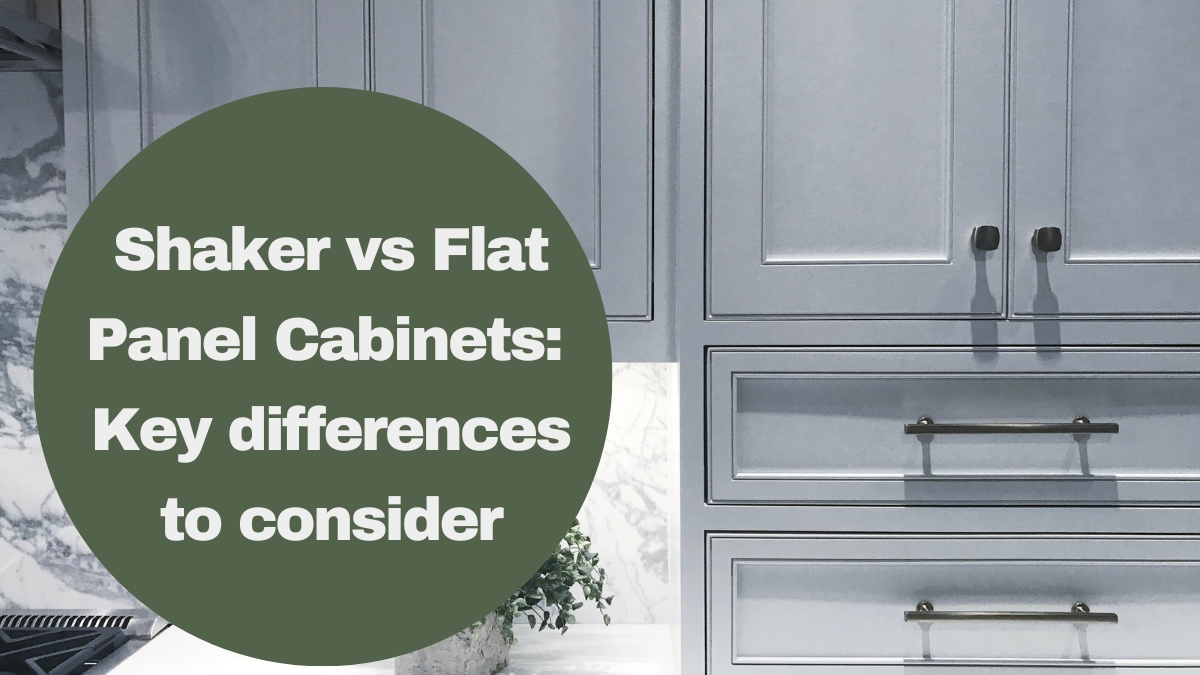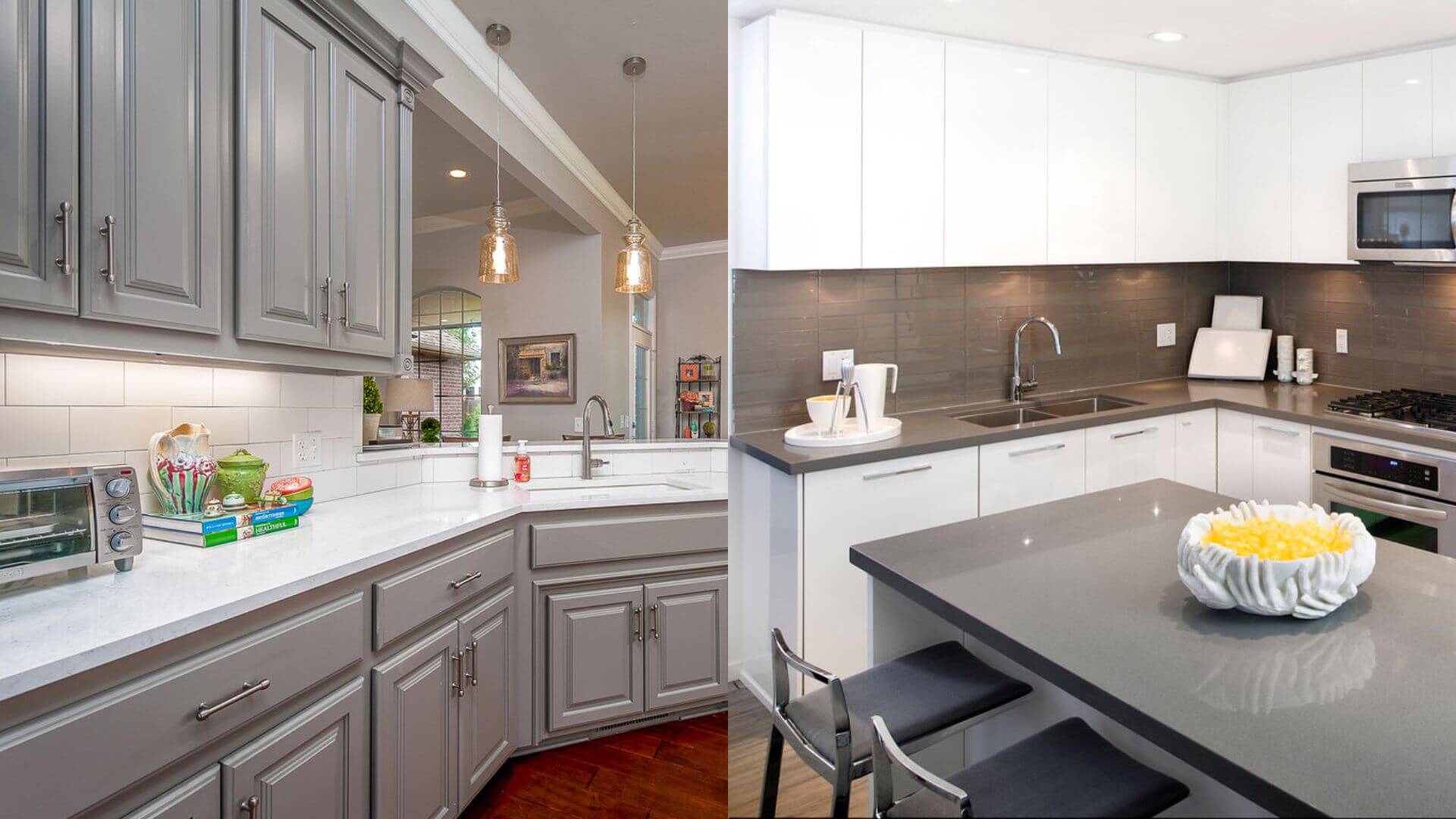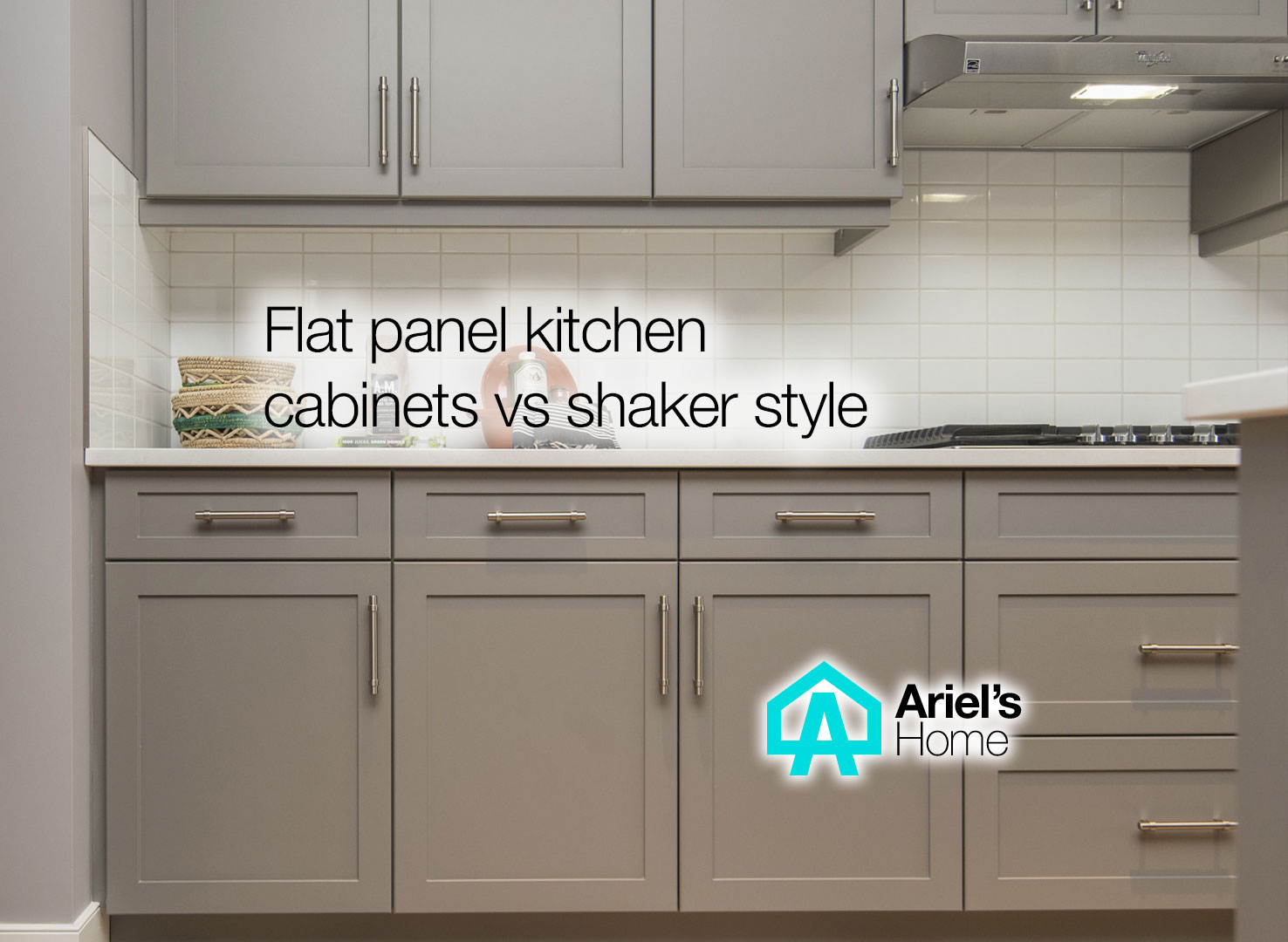Shaker vs. Flat Panel Cabinet Aesthetics

The choice between shaker and flat panel cabinets is often driven by aesthetic preferences, as both styles offer unique visual characteristics that can significantly impact the overall feel of a kitchen or bathroom. While both styles have their distinct advantages, understanding their nuances can help you select the best fit for your design vision.
Visual Appeal and Distinctive Features
Shaker cabinets are characterized by their simple, timeless design, featuring a recessed center panel framed by a raised edge. This subtle detail adds visual interest and texture, creating a classic and elegant look. Flat panel cabinets, on the other hand, boast a sleek and modern aesthetic with their smooth, uninterrupted surfaces. This minimalist design creates a clean and uncluttered look, ideal for contemporary or minimalist spaces.
Impact of Door Styles on Kitchen and Bathroom Aesthetics
The choice of cabinet door style significantly impacts the overall aesthetic of a kitchen or bathroom. Shaker cabinets, with their recessed panels, offer a sense of warmth and traditional charm. Their versatility allows them to seamlessly integrate into various design styles, from farmhouse to contemporary. Flat panel cabinets, with their clean lines and minimalist approach, exude a modern and sophisticated vibe. They are particularly well-suited for contemporary kitchens and bathrooms, where simplicity and functionality are paramount.
Shaker and Flat Panel Cabinets in Different Architectural Styles
Shaker cabinets are a popular choice for traditional, farmhouse, and transitional kitchens. Their classic design complements the warm and inviting atmosphere of these styles, adding a touch of timeless elegance. Flat panel cabinets, with their sleek and modern aesthetic, are often favored for contemporary and minimalist spaces. Their clean lines and minimalist design enhance the clean and uncluttered look of these architectural styles.
Influence of Cabinet Door Styles on Perceived Size and Openness
The choice of cabinet door style can also influence the perceived size and openness of a space. Shaker cabinets, with their recessed panels, can create a sense of depth and visual interest, making a room feel more spacious. Flat panel cabinets, with their smooth surfaces, can enhance the feeling of openness and airiness, particularly in smaller spaces.
The subtle details of cabinet door styles can significantly impact the overall aesthetic and perceived size of a space.
Construction and Functionality: Shaker Vs Flat Panel Cabinets

While aesthetics play a significant role in choosing cabinet styles, understanding the construction and functionality aspects is crucial for long-term satisfaction. Shaker and flat panel cabinets differ in their construction methods, which directly impacts their durability, ease of cleaning, and suitability for various storage needs.
Construction Methods
The construction methods employed for shaker and flat panel cabinets influence their overall durability and longevity.
- Shaker Cabinets: Shaker cabinets typically feature a raised panel door construction, with a frame surrounding a recessed panel. This construction provides a classic and timeless look, but it also adds complexity to the manufacturing process. The frame is usually constructed using solid wood or plywood, while the panel can be made from solid wood, plywood, or MDF. The joinery techniques used in shaker cabinets often involve dovetail joints, which are known for their strength and durability.
- Flat Panel Cabinets: Flat panel cabinets, on the other hand, feature a simple, flat door construction, often using a single piece of plywood or MDF. The absence of a raised panel simplifies the manufacturing process, leading to potentially lower costs. While flat panel cabinets may not offer the same intricate detail as shaker cabinets, they can be just as durable, especially when constructed with high-quality materials and joinery techniques.
Durability and Longevity
The durability and longevity of cabinets are influenced by the quality of materials and construction methods.
- Shaker Cabinets: Shaker cabinets, with their solid wood frames and dovetail joints, are generally considered more durable and long-lasting than flat panel cabinets. They can withstand everyday wear and tear, and with proper care, they can last for generations.
- Flat Panel Cabinets: Flat panel cabinets, while often constructed with plywood or MDF, can also be very durable. However, their longevity depends heavily on the quality of materials and construction techniques. Cabinets made with high-quality plywood and strong joinery will be more durable than those made with lower-quality materials and simple joinery.
Impact of Door Styles on Functionality
The choice between shaker and flat panel cabinets can impact functionality, particularly in terms of cleaning and accessibility.
- Shaker Cabinets: The raised panel design of shaker cabinets can create crevices and corners that are more challenging to clean. However, the recessed panel can also provide a more forgiving surface for fingerprints and smudges.
- Flat Panel Cabinets: Flat panel cabinets offer a smooth, uninterrupted surface that is easier to clean and maintain. However, fingerprints and smudges may be more visible on a flat surface.
Suitability for Different Storage Needs
Shaker and flat panel cabinets can be adapted to different storage needs, including open shelving and drawers.
- Shaker Cabinets: Shaker cabinets can be used for both open shelving and drawers. The traditional look of shaker cabinets complements open shelving, creating a warm and inviting aesthetic. For drawers, shaker cabinets offer a classic and timeless look.
- Flat Panel Cabinets: Flat panel cabinets are often favored for modern kitchens, where open shelving and drawers are commonly used. Their sleek and minimalist design complements contemporary aesthetics.
Cost and Customization

When choosing between shaker and flat panel cabinets, cost and customization options are significant factors to consider. Both styles offer unique advantages and disadvantages in terms of price and flexibility.
Cost Comparison
The cost of cabinets is influenced by various factors, including materials, finishes, construction, and customization. Shaker cabinets typically cost more than flat panel cabinets due to their more intricate design and the additional labor required for their construction.
- Materials: Shaker cabinets often utilize higher-quality wood species, such as maple or cherry, which can increase the overall cost. Flat panel cabinets, on the other hand, can be constructed from more affordable materials, like plywood or medium-density fiberboard (MDF).
- Finishes: Shaker cabinets can accommodate a wider range of finishes, including paint, stain, and glazing. These finishes can add to the overall cost, especially if they require specialized techniques or multiple layers of application. Flat panel cabinets are generally more straightforward to finish, with options ranging from simple paint to laminate.
- Construction: Shaker cabinets typically involve more complex construction techniques, including the use of raised panels and intricate moldings. This complexity can contribute to higher labor costs. Flat panel cabinets have a simpler design, requiring less labor and potentially reducing overall costs.
Customization Options
Both shaker and flat panel cabinets offer a range of customization options to personalize your kitchen or bathroom.
- Hardware: Shaker and flat panel cabinets can accommodate a variety of hardware styles, from traditional to modern. The choice of hardware can significantly impact the overall aesthetic and functionality of the cabinets.
- Paint Colors: Both styles can be painted in a wide array of colors, allowing for a personalized look. Shaker cabinets, with their raised panels, can showcase color variations and textures more effectively than flat panel cabinets.
- Wood Species: Shaker cabinets can be crafted from a wider variety of wood species, offering greater flexibility in terms of color, grain pattern, and durability. Flat panel cabinets are often constructed from more standardized materials, limiting the choice of wood species.
Customization Impact on Budget
Customization options can significantly impact the overall budget for a kitchen or bathroom renovation. Adding features like custom-sized cabinets, unique finishes, or specialized hardware can increase the cost. However, customization also allows for a more personalized and functional space that meets your specific needs and preferences.
Design Integration, Shaker vs flat panel cabinets
Shaker and flat panel cabinets can be seamlessly integrated into a variety of design schemes.
- Traditional: Shaker cabinets are a popular choice for traditional kitchens, where their classic design complements the overall aesthetic. They can be paired with crown molding, decorative hardware, and warm wood tones for a timeless look.
- Modern: Flat panel cabinets are well-suited for modern kitchens, offering a clean and minimalist aesthetic. They can be paired with sleek hardware, bold colors, and open shelving for a contemporary look.
- Transitional: Both shaker and flat panel cabinets can be used in transitional kitchens, where a blend of traditional and modern elements creates a harmonious design. Shaker cabinets can be painted in a modern color palette, while flat panel cabinets can be paired with traditional hardware for a balanced look.
Shaker vs flat panel cabinets – The choice between shaker and flat panel cabinets often comes down to personal preference, but it’s worth considering the overall aesthetic you’re aiming for. Shaker cabinets, with their simple, clean lines, can create a timeless and traditional feel, while flat panel cabinets offer a more modern and minimalist look.
Speaking of style, you might be wondering are curio cabinets out of style , as they can add a touch of vintage charm. Ultimately, the best choice for your kitchen depends on your individual taste and the style of your home.
Choosing between shaker and flat panel cabinets is a matter of personal taste. Shaker cabinets, with their simple, clean lines and recessed center panels, offer a timeless elegance. If you’re curious to learn more about the defining features of this style, you can check out what are shaker cabinets.
Flat panel cabinets, on the other hand, provide a sleek and modern look, often favored for contemporary kitchens. Ultimately, the choice depends on the desired aesthetic and the overall design of your space.
